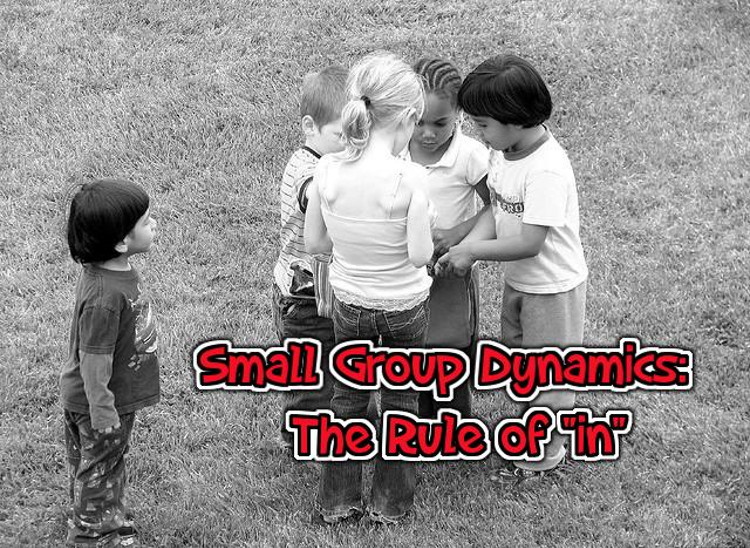The theology of Spiritual Formation sounds great on paper, but it is focused on the wrong target. Progress toward greater spirituality is measured by what can be seen (for example, how well I maintain the routines of sabbath, bible reading, confession; how loving my actions are toward others; how much I experience greater joy and contentment; how well I serve and sacrifice, etc.) which means success is measured by outward righteous behavior. But is outward righteous behavior the right target?
Does Spiritual Formation work? Answers from Haggai
“Spiritual formation” is a hot topic today. But does it work? The Old Testament prophet Haggai would answer no.
Women’s Retreat Survival Kit
A conference I attended gave each participant this simple and heartwarming “Conference Survival kit” which contained the following items and Scripture.
Small Group Dynamics: The Rule of “In”
In new groups, participants often seek connections through icebreaker questions. How we respond impacts the future community. I’ve learned to employ what I call the “Rule of In”.
Example: Discipleship Survey Sample
Most women’s ministries offer a discipleship program at some point. While there is no “one size fits all” model for how to implement discipleship, here are some ideas to help you get started.
Bible Study: What to observe
Once a friend confessed: “I know an essential step of any Bible study is observation. But what am I suppose to observe?” So glad you asked! Sometimes we take this step for granted when talking about how to study the Bible, but observation is a skill we learn and practice like any other.
Generally, the study process begins with the big picture, zooms into the details and then returns to the big picture to put it all together. Observation takes place in the “detail” stage.
Here’s are a few basic things you can “observe”.
Bible Study: How to Observe
The first step in Bible study is observation. The goal is to slow down your reading and generate a list of questions that must be answered to understand the passage. I tend to break observation into the following 4 steps which generally correspond to my first few readings through the passage.
How to Interpret the Bible
After you’ve done your observation, word studies, outlining and answered the questions you generated, it’s time to start putting it all together. In this step, you want to collect, refine and organize all those details you observed into a coherent meaning. Observation primarily focuses on the questions: “what does it say and how do I know?” Interpretation focuses on the questions: “what does it mean and how do I know?”
How NOT to interpret the Bible
https://wednesdayintheword.com/how-not-to-interpret-the-bible-dont-think-twice/
How is the Old Testament organized?
In the Christian Bible, the Old Testament is divided into 4 main parts based on genre. Within each genre, books are organized by author, chronology and size.
Early Church Heresies
While not a complete list of early church heresies, these groups are the ones that the New Testament authors seem to write against and respond to most often
Who are you listening to?
Today we often seek preachers who tell us stories, make us laugh, and tickle our ears with poetry and platitudes. We would rather listen to Jon Stewart than Jonathan Edwards. We ought to think critically about how far we have slipped down the slope of valuing style over substance.












